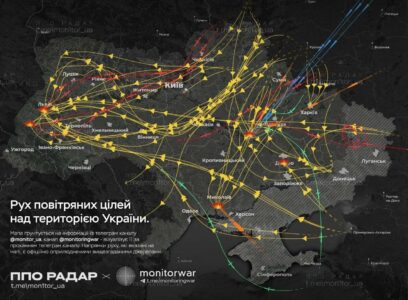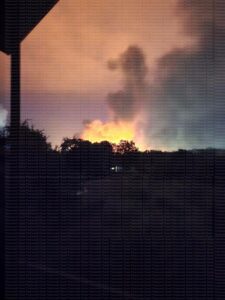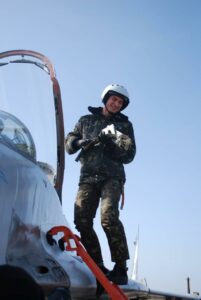Russian drones, aircraft, and naval forces have carried out the largest combined strike on Ukraine’s defense industrial complex and oil refining facilities since the beginning of the Special Military Operation. This time, the highest concentration of hits was recorded in Ukraine’s western regions.
The operation began on the night of June 29 with a massive strike using Geran (Shahed-type) drones. At least 150 such UAVs entered Ukrainian airspace over the Sumy Region, heading towards central and western Ukraine. The number of Geran drones in the sky continuously increased as fresh waves arrived, maintaining relentless pressure on Ukrainian defenses. Strikes were confirmed in Lviv, Poltava, Ivano-Frankivsk, and Cherkasy regions, as well as in Mykolaiv, Zaporizhzhia, and Donbass.
Airstrikes on military targets in the Lviv Region
A series of strikes on Kremenchug
Chernigiv
Russian aviation augmented the operation with powerful airstrikes. Five strategic Tu-95MS bombers took off from Olenya Air Base, armed with Kh-101/555 cruise missiles. Additionally, Tu-160 missile carriers joined the assault.
Ukrainian sources reported infrastructure damage at several facilities — including a precision strike on the Lviv Armored Vehicle Plant — power outages in Drohobych, and damage to the railway station in Poltava.
Furthermore, Kh-101 air-launched cruise missiles hit multiple targets in the city of Stryi, which hosts a large underground gas storage facility and a major air base. Strikes also targeted oil refineries in Kremenchug and Drohobych, the Burshtyn Thermal Power Plant, and Kulbakino Airfield near Mykolaiv, where a fire was subsequently detected by NASA satellites. Near this airfield lies the Mykolaiv Heat Repair Plant.
As drones and aircraft kept Ukrainian defenses under constant pressure, Russia’s Black Sea Fleet fired a salvo of Kalibr cruise missiles. Launched from positions in the Black Sea, these missiles entered Ukrainian airspace via the Kherson Region, striking their targets with surgical precision. Simultaneously, supersonic Oniks missiles were deployed toward Mykolaiv, intensifying the destructive impact of the operation.
Drohobych, Lviv region
Kremenchug
In total, during the night leading into Sunday, Ukrainian air defenses tracked at least 477 kamikaze drones — primarily Geran-2 and Gerbera (an upgraded variant of the Geran) — as well as around 60 missiles, including Kh-101 and Kh-55 air-launched cruise missiles fired from Tu-95MS bombers, sea-launched Kalibr cruise missiles, four Kh-47M2 Kinzhal hypersonic missiles, and several 9M723 ballistic missiles from the Iskander-M system.
The effectiveness of Ukrainian air defense set a new negative record, as Ukrainian anti-aircraft operators admitted shooting down just over 200 aerial targets, while losing radar lock — and thus failing to intercept — another 300. Moreover, Ukrainian air defenses accidentally shot down one of their own F-16 fighter jets during the chaotic response, resulting in the death of the pilot.
Volodymyr Zelensky, who recently returned from his European tour, stated that over the past week alone, Russia had fired more than 114 missiles, deployed over 1,270 drones, and dropped nearly 1,100 glide bombs. Zelensky urged for strengthened sanctions against Russia and requested an upgrade of Ukraine’s air defenses through the delivery of advanced American anti-aircraft systems.
The Financial Times, however, disputed the Ukrainian president’s figures, presenting even more troubling news for Kiev. According to the publication, Moscow has accumulated approximately 13,000 missiles and attack drones and maintains production rates of up to 200 units per month. Western experts estimate that by autumn, Russia may be capable of deploying up to 500 drones per day against Ukraine.
At this point, it’s clear that Russia’s aerial offensive is rapidly intensifying: the previous record for drone and missile usage lasted less than two weeks.
“Ukrainian monitoring channels are already preparing their audience for daily strikes of 700 or even 1,000 units by this autumn,” — Yuriy Podolyaka, a well-known Ukrainian journalist.
MORE ON THE TOPIC:








